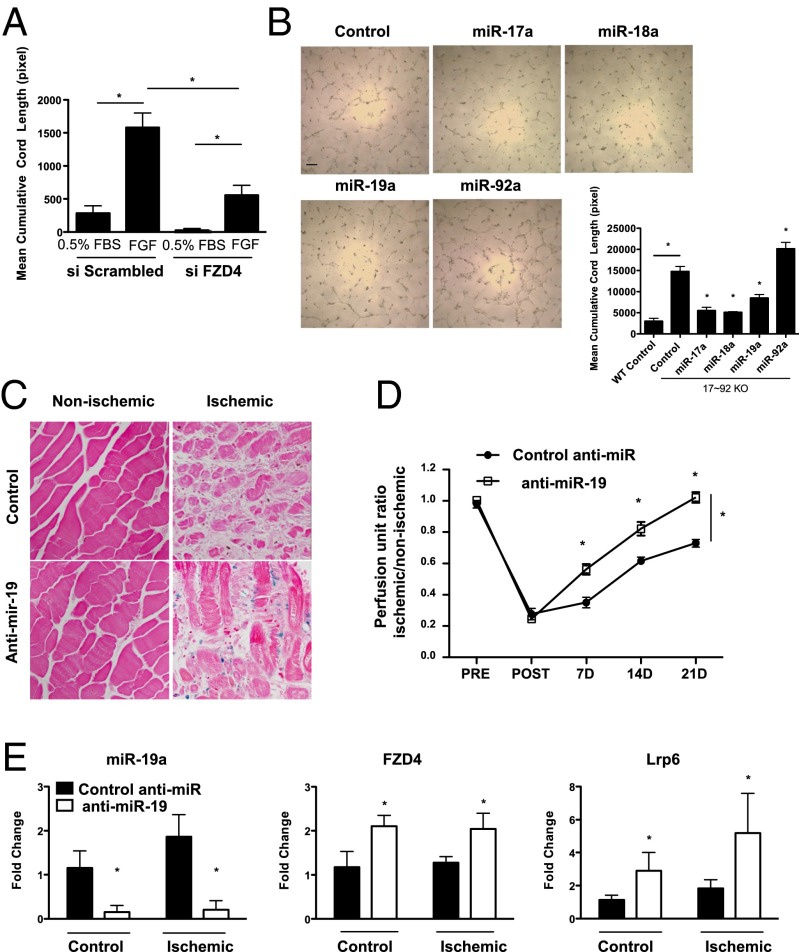Fig. 5.
FZD4 knockdown and miR-17∼92 cluster components rescue augmented cord formation in cluster-deficient ECs, and LNA–miR-19 improves flow recovery. (A) The 17∼92 KO ECs transfected with siFZD4 (20 nM) or control siRNA were plated on Matrigel to assess cord formation. *P < 0.05. (B) Individual components of the cluster were transfected into 17∼92 KO ECs, and cord formation was quantified. *P < 0.05. n = 3 experiments in triplicate. (Scale bar: 200 μm.) (C and D) Aged BAT-gal or WT mice were injected with 12.5 mg/kg LNA–anti–miR-19 or LNA scramble control for 3 consecutive days before induction of HLI, followed by injections on days 1, 8, and 15 post-HLI. (C) β-catenin–dependent gene expression (LacZ) in ischemic limbs. (D) Blood flow changes; n = 9 mice per group. *P < 0.05, two way ANOVA. (E) qRT-PCR analysis of thigh muscle tissue confirming miR-19 repression in animals treated with the LNA-modified anti–miR-19. Sample analyses depict overall significant increases in FZD4 (Middle) and LRP6 (Right) mRNA levels in mice treated with LNA miR-19 expression compared with control LNA-miR–treated mice. n = 4 mice per group. *P < 0.05, two-way ANOVA. All data are mean ± SEM.

